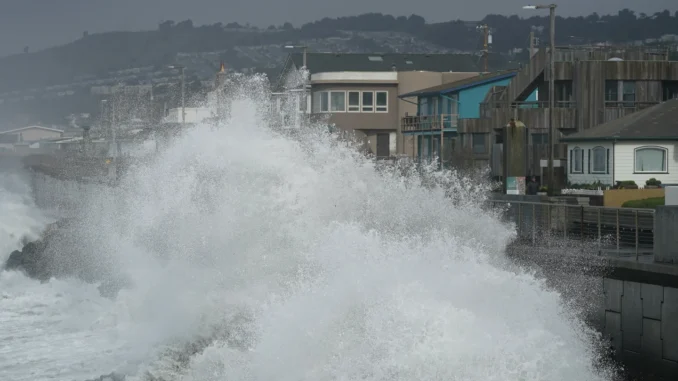
SAN DIEGO (AP) — Waves are getting bigger and surf at least 13 feet (about 4 meters) tall is becoming more common off California’s coast as the planet warms, according to innovative new research that tracked the increasing height from historical data gathered over the past 90 years.
Oceanographer Peter Bromirski at Scripps Institution of Oceanography used the unusual method of analyzing seismic records dating back to 1931 to measure the change in wave height.
When waves ricochet off the shore, they collide with incoming waves and cause a ripple of energy through the seafloor that can be picked up by seismographs designed to detect earthquakes. The greater the impact, the taller the wave is.
Until now, scientists relied on a network of buoys by the National Oceanic and Atmospheric Administration that collect data on wave height along U.S. coasts, but that data along the California coast only went back to 1980.
“Until I stumbled upon this data set, it was almost impossible to make that comparison with any kind of reliability,” Bromirski said.
To go back further, Bromirski gathered a team of undergraduate students to analyze daily seismic readings covering decades of winters. It was a slow, painstaking process that took years and involved digitizing drums of paper records. But he said it was important in learning how things have changed over nearly a century along California’s coast.
They found that average winter wave heights have grown by as much as a foot since 1970, when global warming is believed to have begun accelerating. Swells at least 13 feet tall (about 4 meters) are also happening a lot more often, occurring at least twice as often between 1996 to 2016 than from 1949 to 1969.
Bromirski was also surprised to find extended periods of exceptionally low wave heights prior to about 1970 and none of those periods since.
“Erosion, coastal flooding, damage to coastal infrastructure is, you know, something that we’re seeing more frequently than in the past,” Bromirski said. “And, you know, combined with sea level rise, bigger waves mean that is going to happen more often.”
Changes in waves are showing up in other ways, too.
“There’s about twice as many big wave events since 1970 as there was prior to 1970,” Bromirski said.



